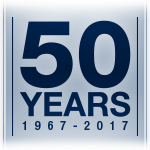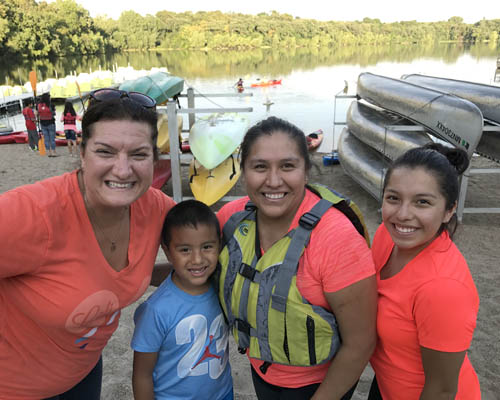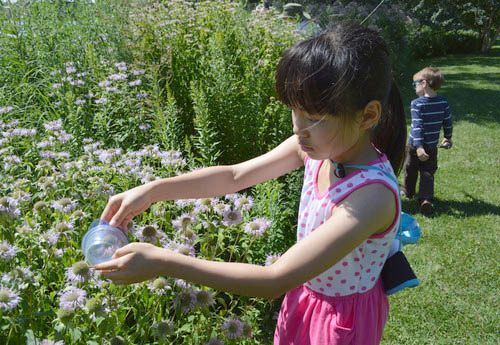
A new world opened for Paola Aguila after she accepted a Facebook invitation from the Metropolitan Council’s new Parks Ambassador Program to “Join us for Kayaking” in a nearby regional park.
“I had never kayaked on my own, and never really been to a regional park,” the Bloomington woman said. “But when I saw the invitation to join my Latino friends for kayaking, then it was okay.
“It was very exciting. I loved it!” she said.
 A Mexican-American whose parents are immigrants, Paola is a college student who also works part time to support her education. “All I do, and all my friends do, is work and go to school,” she said. “This was a great opportunity to get outside and meet new people in my community while doing something really fun. I definitely will go back to the park with my friends.”
A Mexican-American whose parents are immigrants, Paola is a college student who also works part time to support her education. “All I do, and all my friends do, is work and go to school,” she said. “This was a great opportunity to get outside and meet new people in my community while doing something really fun. I definitely will go back to the park with my friends.”
Paola joined her mother, Laura, at Hyland-Bush-Anderson Lakes Park Reserve in Bloomington. It was Laura who had first seen the invitation on a Facebook site frequented by the Twin Cities’ LatinX community. Laura was new to regional parks system, too.
Parks Ambassador raises awareness about parks, connects people
Celina Martina, the Council’s Parks Ambassador, created the event and invited residents from the LatinX community. Three Rivers Park District co-sponsored the kayak event. The agency is a key Council partner and the largest among 10 agencies that own and manage the regional parks system.
The Council created the Parks Ambassador program to increase awareness of regional parks by communities of color, and invite them into the parks to enjoy what others love: recreation, exercise, solitude, social events, hiking, biking, and much more.
Partnering with regional parks agencies
The Parks Ambassador program is one example of the Council’s efforts to increase awareness and participation of communities of color in the regional parks system. For example, the Council is:
-
Promoting general awareness about typical activities in a park, the benefits of visiting a park, and general safety concerns.
-
Reaching out to community groups and advocates to reduce barriers that prevent more visitors.
-
Improving public engagement about the parks.
The Council is working with the regional park implementing agencies to promote the use of regional parks by non-park users.
‘Partnerships are key to success’ in Saint Paul
Outreach to communities of color is paying off in the City of Saint Paul.
 Since 2014, the Environmental Education staff at Saint Paul Parks & Recreation have launched programs and events targeted to underrepresented groups at several locations, said Faith Krogstad, Parks Environmental Education Coordinator.
Since 2014, the Environmental Education staff at Saint Paul Parks & Recreation have launched programs and events targeted to underrepresented groups at several locations, said Faith Krogstad, Parks Environmental Education Coordinator.
Among the target groups are people of color, new immigrants, families, and seniors.
Support for the special outreach has been provided by the Metropolitan Council with funding from the Minnesota Clean Water, Land and Legacy Amendment and the Capitol Region Watershed District. Program support comes from Minnesota DNR, Urban Roots, the YMCA, the National Park Service, and other groups.
Krogstad said parks staff are building relationships with groups like the Saint Paul Public Housing Authority, Hallie Q. Brown Community Center, CommonBond Communities, and CLUES (Chicano Latinos Unidos en Servicio) to bring residents on park outings.
Number of regional parks, reserves and special recreation features
1974: 30
1996: 46
2017: 62
Number of visits:
1974: 5 million
1996: 15.9 million
2016: 47.8 million
“Our partnerships are key to the success of our programs,” Krogstad said.
In every case, Krogstad said targeted groups have responded enthusiastically to the outreach. In 2017, the Environmental Education program brought more than 1,900 residents in these groups to more than 60 events and outings in regional parks.
“What we’ve learned is that people from all these communities are very excited to visit our regional parks and participate in parks programming,” she said. “By raising awareness that the parks are here for everyone to enjoy, that they are safe, that we offer structured programming as well as open space and trails to enjoy on their own, people respond very well.
“All our visitors are interested in what we’re doing in the parks and they seem to want more,” she said. “It’s great to see the rapid transition people make from having never visited a park to having such great enthusiasm and wanting to return again.
“That’s exactly the community we’re trying to build, and we are.”
The parks welcome everyone
“What we’re doing is fine-tuning our Regional Parks System to respond to population changes in our region,” said Tony Yarusso, chair of the Metropolitan Parks and Open Space Commission.
“It can take many forms, from building more areas for large family picnics to providing programming that’s friendly to new residents,” he said. “Our goal is to make our parks and trails feel inviting and welcoming for everyone.”
Pick up a parks map
View and download the newly updated Regional Parks Map (pdf). You can pick up a free printed map at your local library or email [email protected] to have one mailed to you.